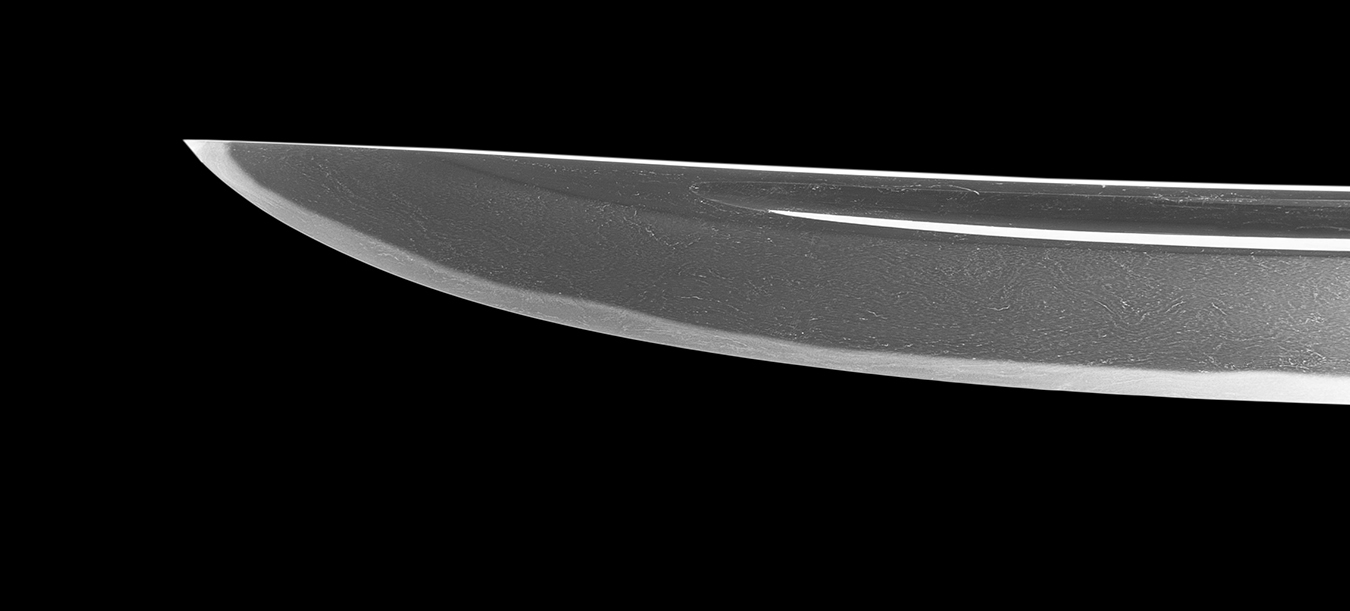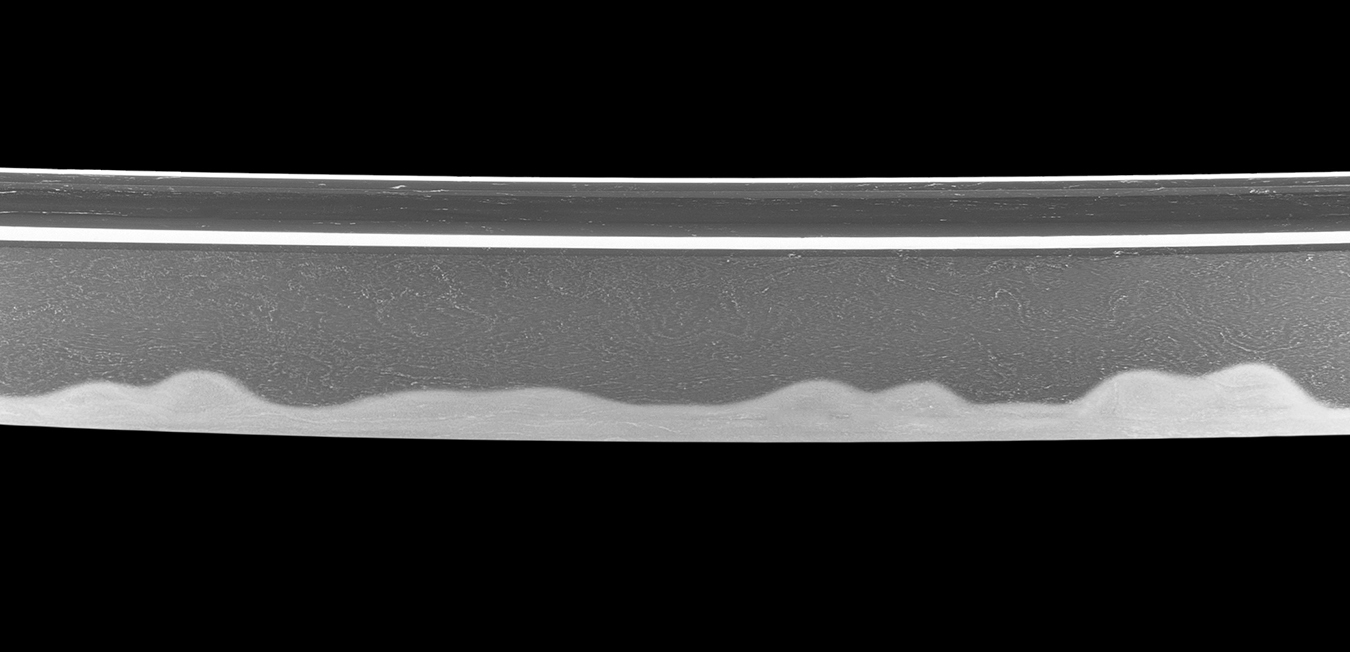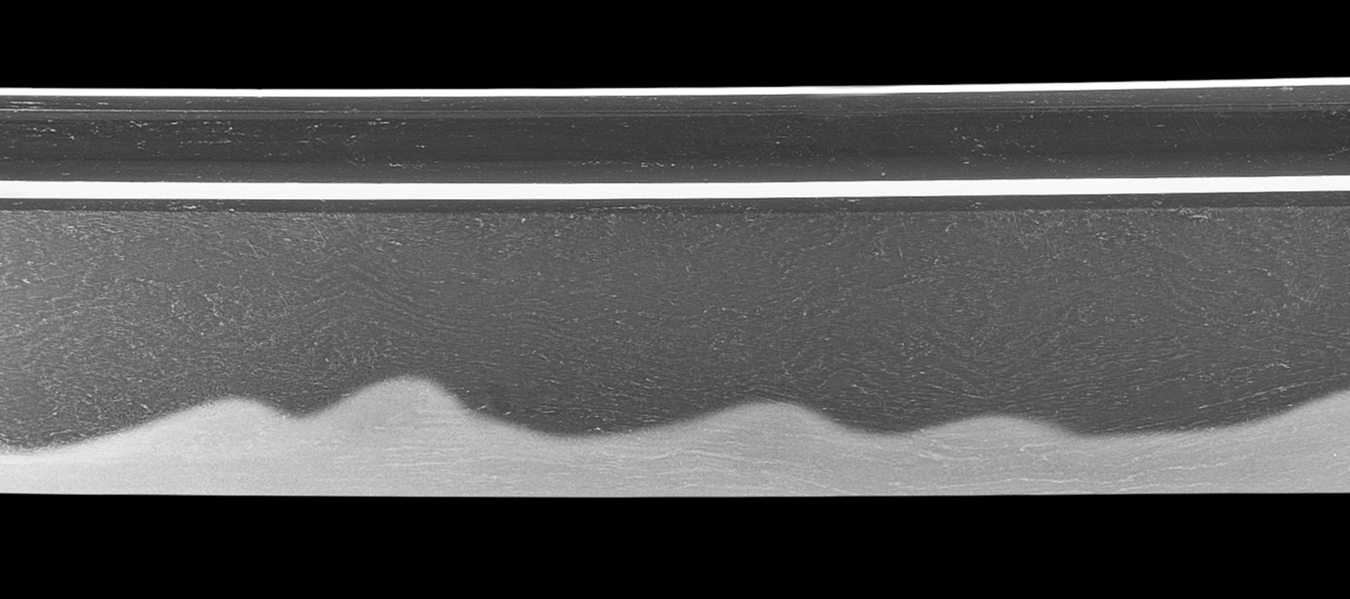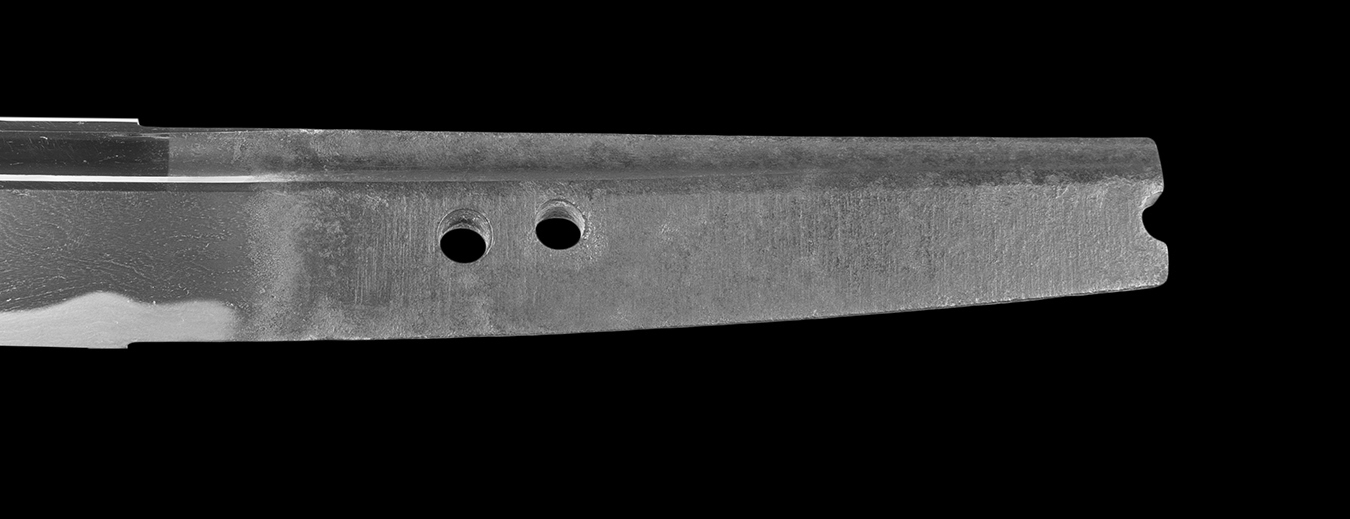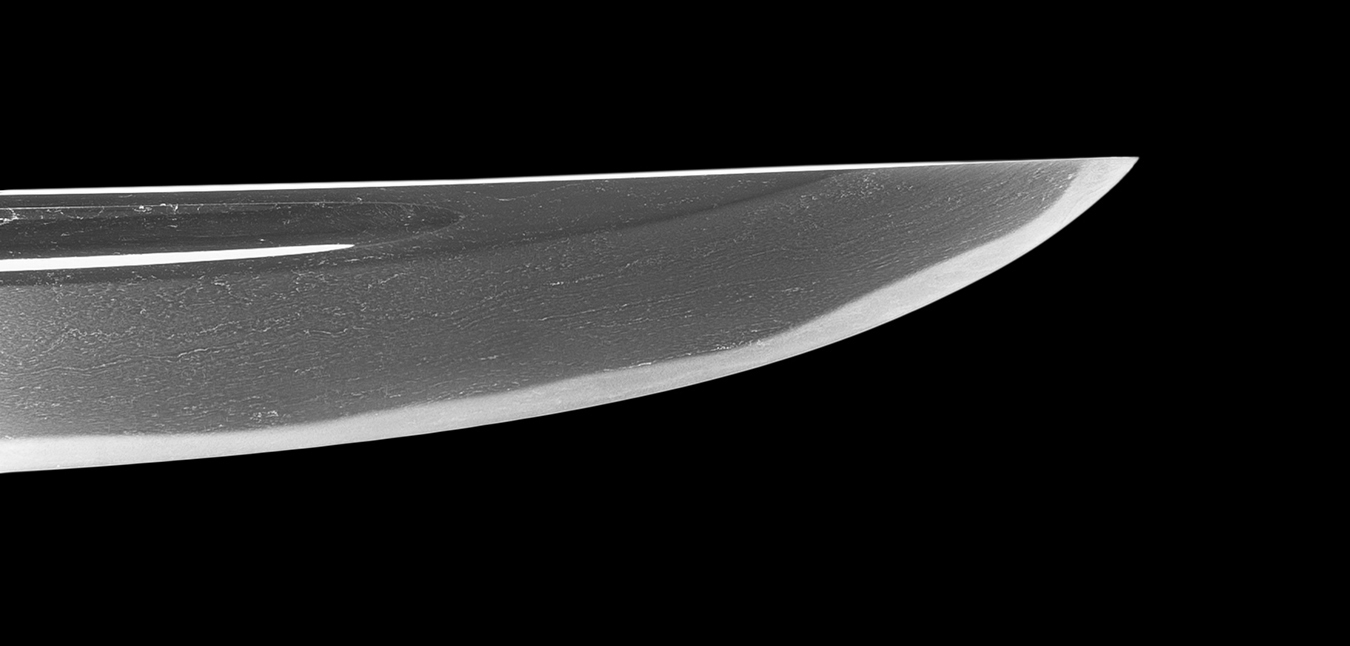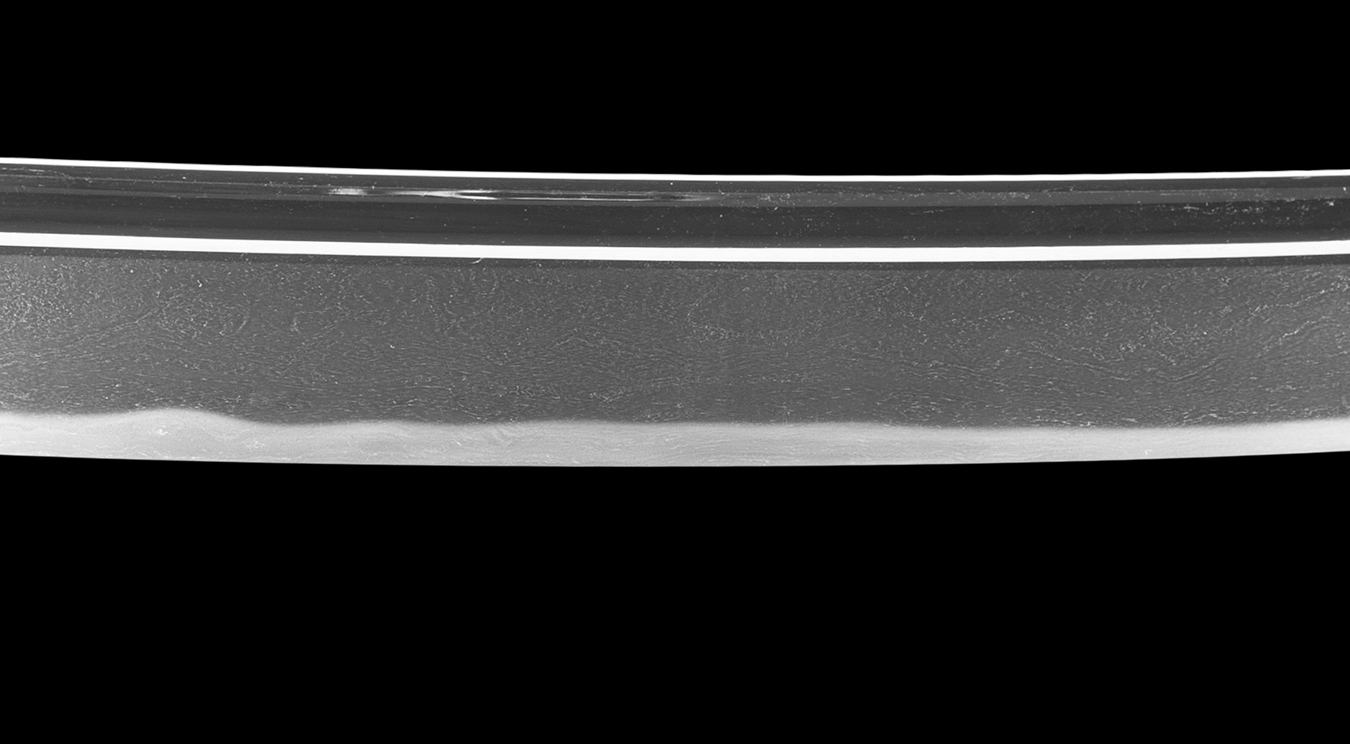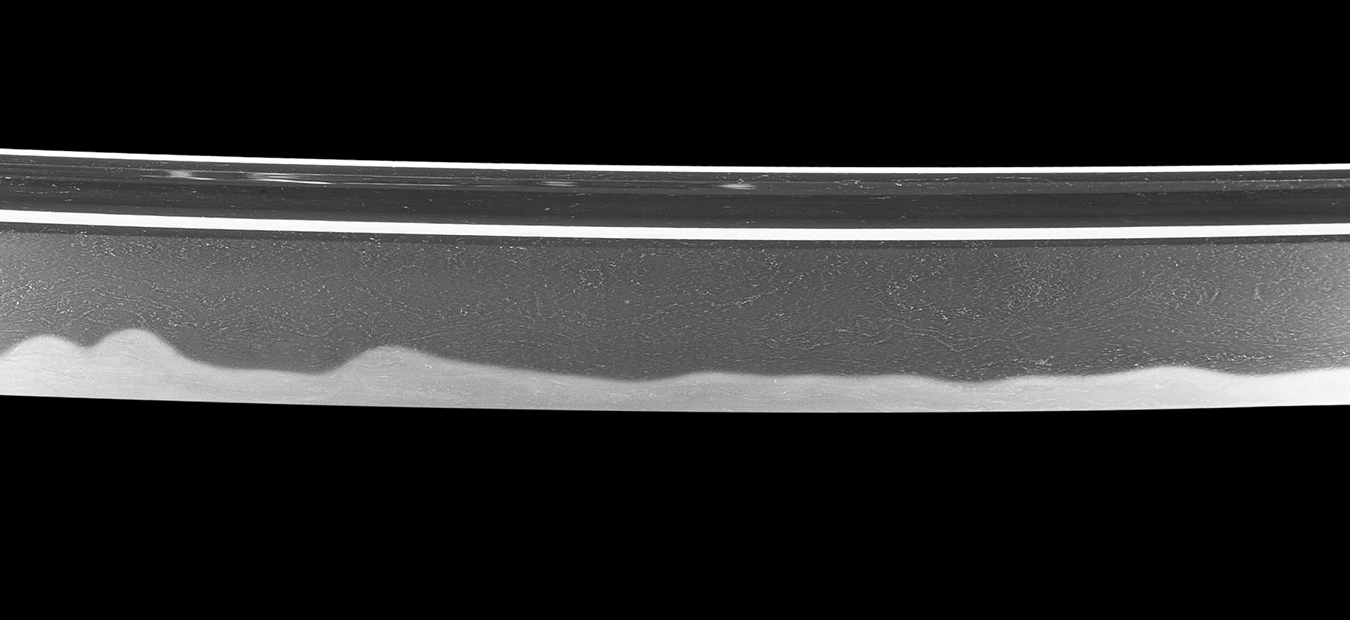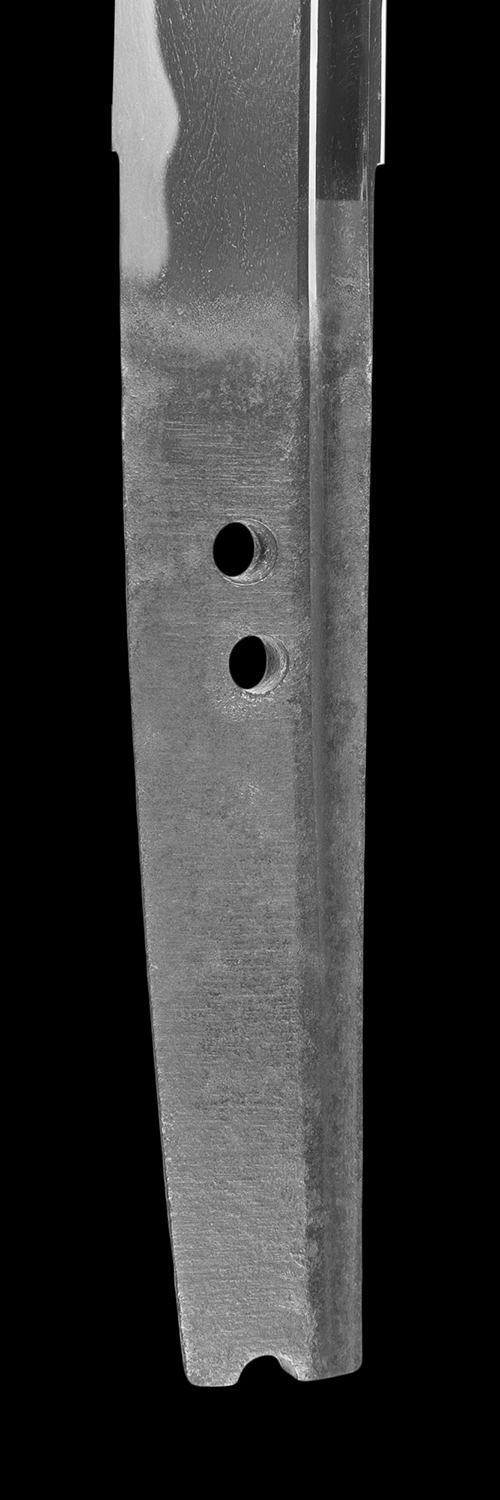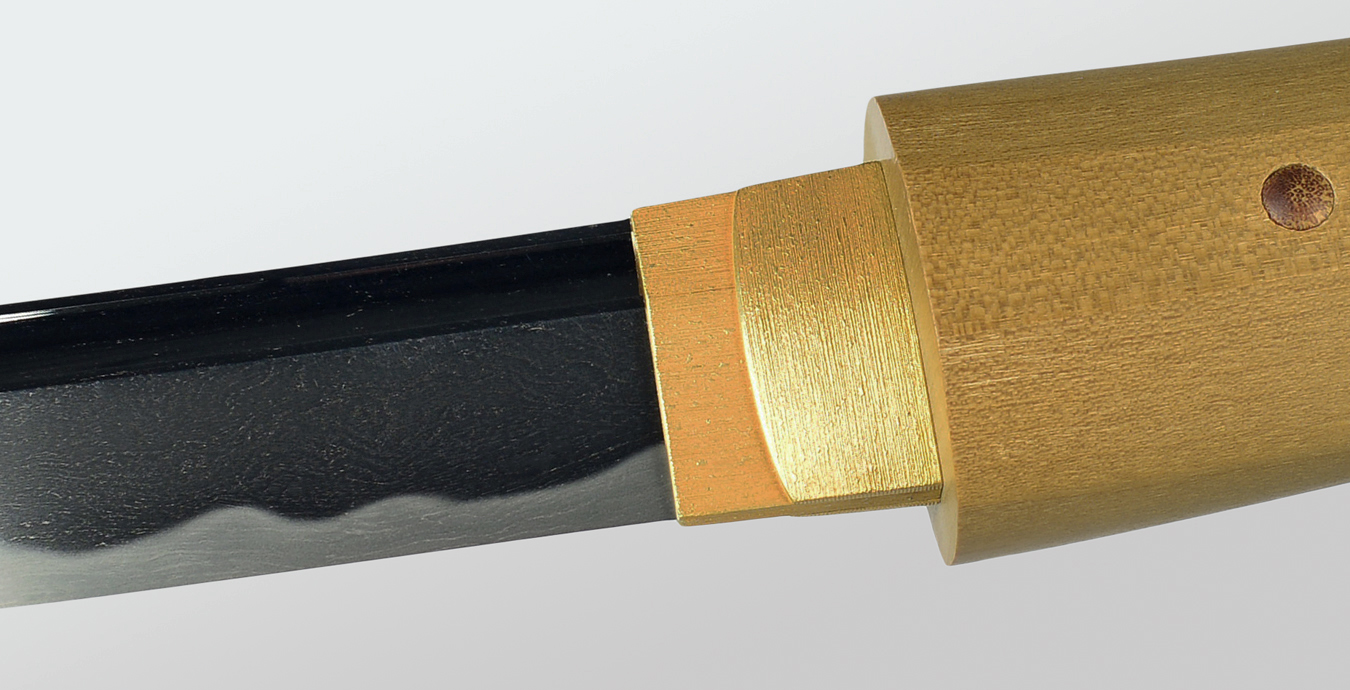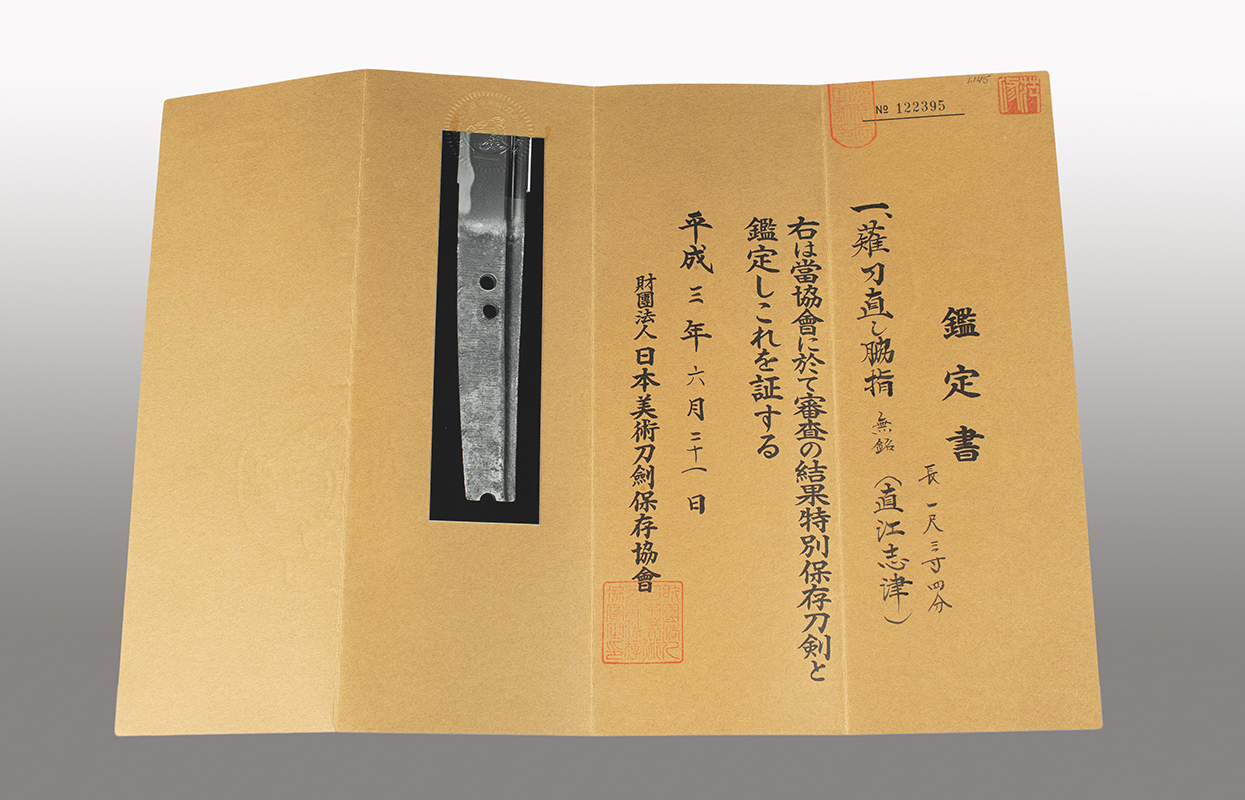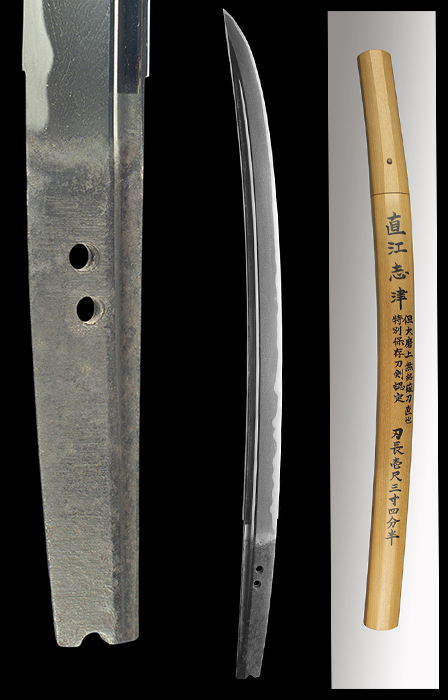|
| |||||||||||||||||||||||||||||||||||||
Hamon : Gunome midare becoming shallow notare in the monouchi. The hamon is nioi deki with ko-nie. Togari formations are mixed in. The ha is packed with subtle hataraki. Sunagashi, kinsuji, inazuma and ashi are all abundant.
Boshi : Yakizumi.
Kitae : Clear and flowing itame mixed with ko-mokume. Masame can be seen in the ha and in the monouchi. The steel is darkish and misty ji-nie is present. Yubashiri can be seen.
About this sword : A Naoe Shizu naginata naoshi from the Nanbokucho period. Kaneuji is famous as one of Masamune's 10 disciples and a co-founder of the Mino tradtion. Kaneuji was a Yamato Tegai smith in the early part of his career and moved to Shizu in Mino province around Geno(1319-1321). Kanetoshi, Kanetomo and Kanetsugu were his sons or relatives that lived in Naoe of the same district. These smiths represent the Naoe Shizu tradition in the Nanbokucho period. The school lasted through early Muromachi times and their style is that of "Soden Mino". Their work is superior to the other Muromachi Mino schools that followed.
This sword was originally a long pole arm or "Naginata". It was converted into a wakizashi around Momoyama-Keicho so it could be worn for daily use. The sugata of this blade, exhibits a wide mihaba, high shinogi, full niku and more gradual sori in the saki, all traits of naginata from Nanbokucho times. The deki is exactly the mixture of Soshu and Mino or "Soden Mino" that Naoe Shizu should be. Please note the Soshu style of nie hataraki but with a predominantly nioi-based yakiba featuring togari-ba - which would evolve later into the Mino style.
The polish of this sword is Juyo class. It is a fine kesho polish with crisp geometry and the hadori is perfect. It follows the nioiguchi with painstaking accuracy and brings out the hataraki clearly, without being overbearing. The jigane is crystal clear and a joy to view. A top level polish realizes a sword's full potential and highlights the traits of a given school/smith. This blade is an ideal example with which to learn what a great polish should be.
This passed Tokubetsu Hozon in 1991. It should be noted that, as a rule, the NBTHK will only award an osuriage mumei blade a Tokubetsu Hozon paper if the work is of high quality and from the Nanbokucho period or earlier.
This blade was once in the Bob Coleman collection. The saya-gaki was done by Tanobe Michihiro for Mr. Coleman in 1991. Bob Coleman was an important and very successful collector of swords in the upper Midwest in and around Chicago. He was one of the people organizing the Chicago Sword Show in the old days and a big part of bringing Yoshikawa Koen of the NTHK to Chicago and other shows for Shinsa. Bob Coleman and Andy Quirt ran a sword auction called "Coleman and Quirt". They produced catalogues for their auctions and Mr. Coleman was also the President of the JSSUS at one time. The kanji used for this sayagaki, that this was done for Bob Coleman, is a point of appreciation. Normally, we see kanji like 應需 for special order statements. The kanji that Tanobe used here are 雅契. This is used in the context of a deep friendship. This is not a term for regular acquaintances. This term is used between people who have higher education and social status. And ending with 之囑 to instruct, to implore.
The blade has a gold foil double habaki, shira-saya and a storage bag. The back of the habaki is contour fitted to the bo-hi as is the opening of the tsuka. The habaki and shira-saya were professionally made in Japan by top level craftsman. An exciting example of Naoe Shizu and a joy to recommend in every way.
HOLD


